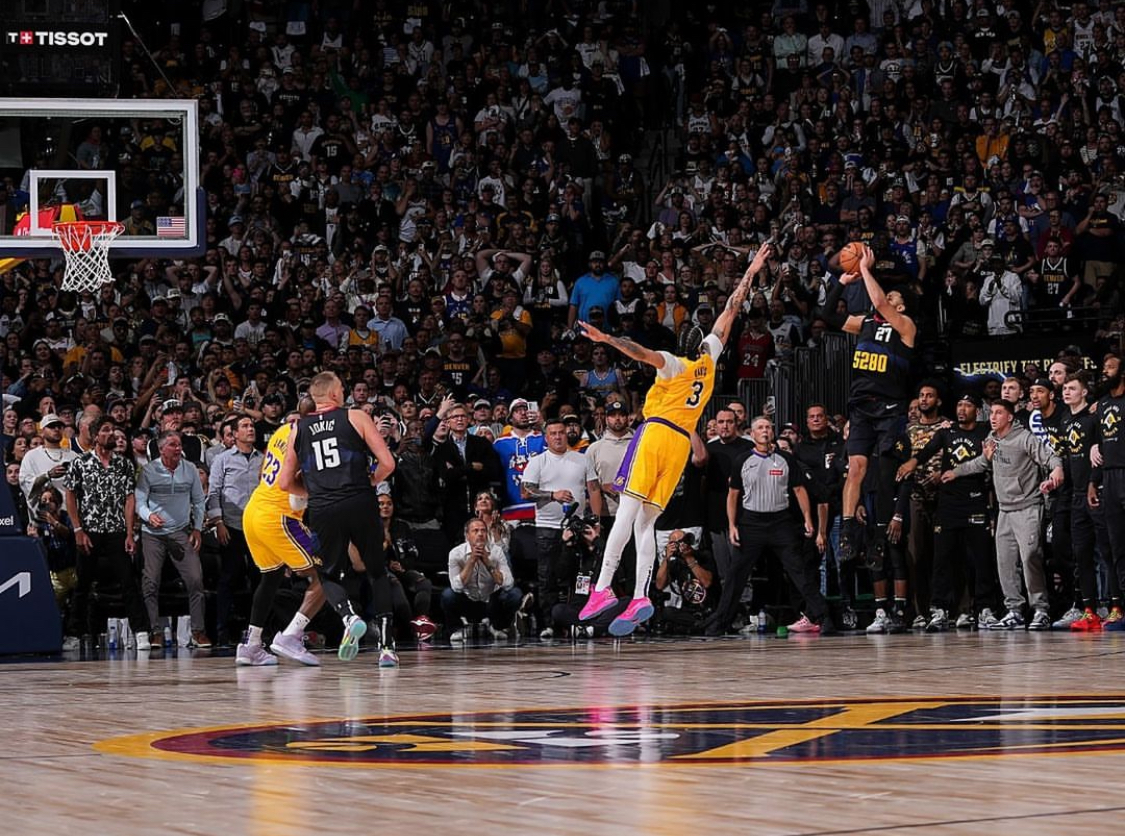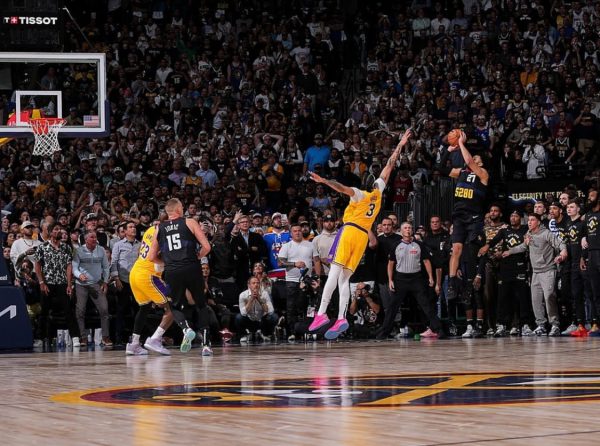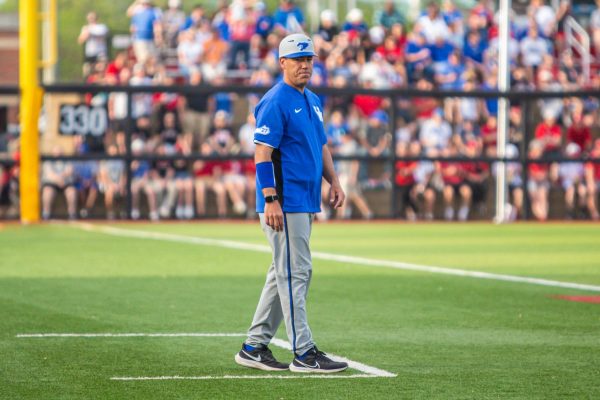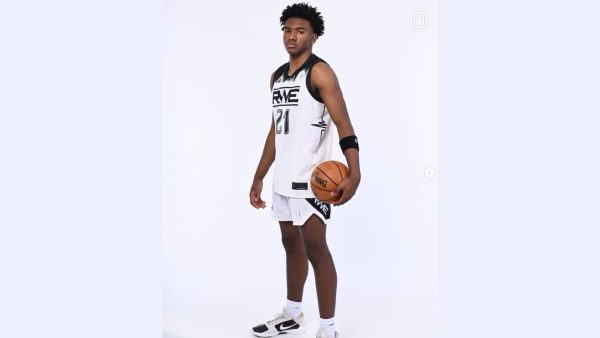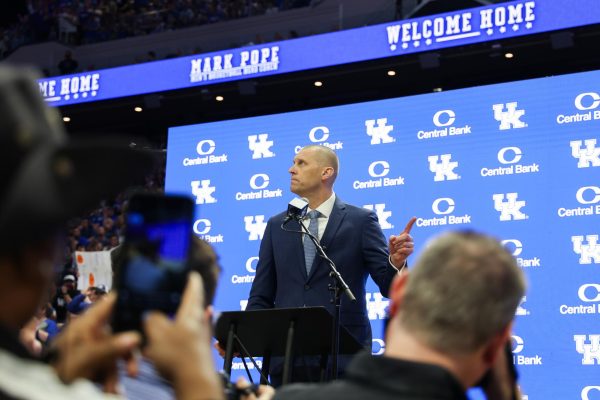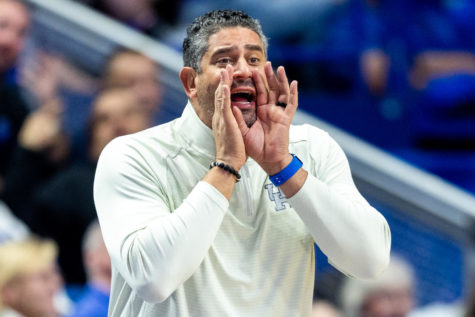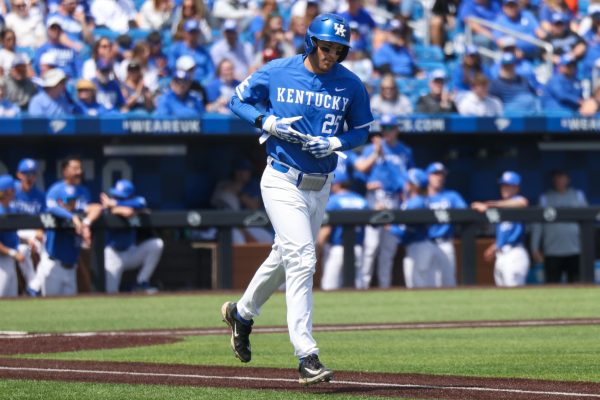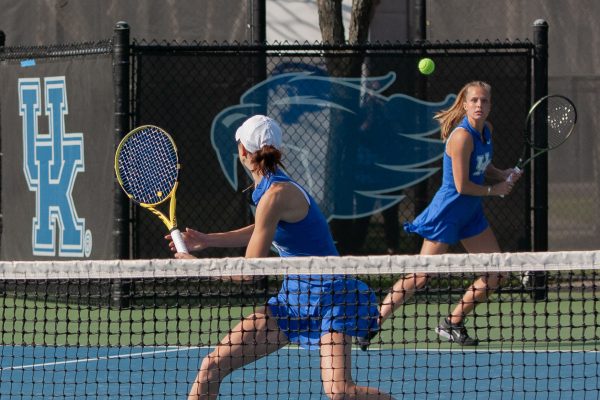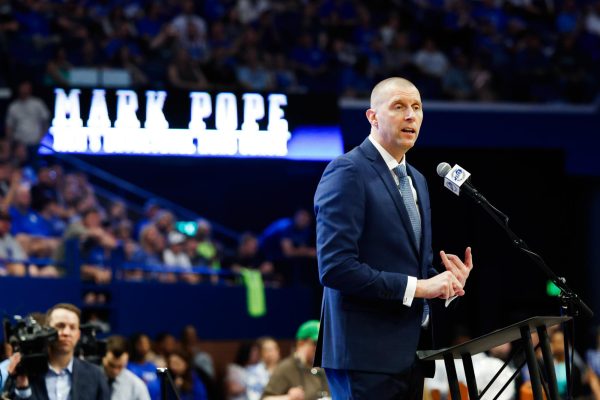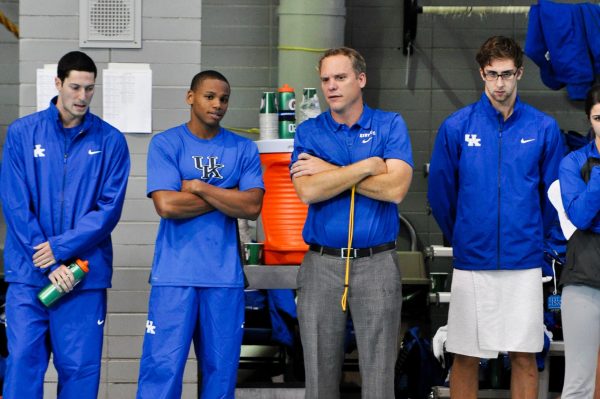Financial deficiency capping UK football
September 18, 2012
The Southeastern Conference dominates the college-football landscape. The conference has six teams ranked in the AP Top 25, including four of the top seven.
Teams from the same conference clashed for the first time ever in a BCS Championship game last season, as Alabama and LSU vied for a national title.
Since 2006, college football’s national champion has come from the SEC — an unprecedented six-year streak.
During those six years, UK is a combined 16-32 against SEC competition.
Football is the greatest revenue generator for UK Athletics, but lack of investment in the program may be impacting its ability to compete in the SEC.
And despite the historic winning tradition of men’s basketball, football generates more profit for UK Athletics — and basketball isn’t even close.
“What most people don’t understand is that every school is a football school. The amount of revenue that football can generate dwarfs even the greatest basketball programs,” said Mark Nagel, associate professor in the sport and entertainment management department at the University of South Carolina. “Certainly the fans identify with what sport wins the most, but football just has the potential to make so much more money with attendance and television contracts.”
The 2012-13 athletic budget approved in the summer by the UK Board of Trustees shows that football is slated to produce $27.6 million in revenue while spending $9.5 million — for a profit of $18.1 million.
By comparison, men’s basketball, even coming off a national championship, is projected to produce $20.8 million in revenue, while spending $12.6 million — for an $8.2 million profit.
Those are the only two profitable programs for the university. The other 20 sports lose a combined $11.6 million, according to the 2012-13 budget.
“We have to have football be good. We can’t sit here and not let football do good at the gate,” UK athletic director Mitch Barnhart told the Kernel in August. “We will always look at that closely. We are in a good league and that does give us stability.”
The other sports rely on funds generated from the football program, which was budgeted to generate $2 million less than last year at least partly because of results on the field.
Last year the Cats ended a five-year run of bowl appearances and finished the season with a 5-7 record. The Lexington Herald-Leader reported in late August that UK football season ticket sales were down more than 10,000 from last year.
UK’s home opener against Kent State brought 48,346 fans to Commonwealth Stadium, the fewest to attend a home opener since 1973 and the lightest-attended home game since 1996, before a Commonwealth Stadium seating expansion.
Not many more (53,980) came Saturday night to witness the Western Kentucky Hilltoppers upset the Cats 32-31 in overtime. The last time the
Cats failed to draw more than 60,000 for a game sometime during the season was in 1998.
“In the grand scheme of a $91 million budget, if you are off just a little bit obviously that is a problem. If we’re off 10-15 percent of your total department revenue, obviously that’s a $9 or $10 million dollar hit,” Barnhart said in August. “A couple of percentage points, we can figure a way to manage our way through that.”
This is the first year football is budgeted to decline in revenue since 2004-05. Football revenue grew nearly 50 percent from 2008-09 ($20 million) to 2011-12 ($29.6 million), fueled by success on the field and SEC revenue-sharing agreements.
“The primary spark in growth of football revenues during that time came from the increase from the new SEC television contract, which went into effect in the fall of 2009,” UK spokesman Tony Neely said in an email to the Kernel.
The Cats generated enough wins to reach a bowl game for five straight years, and average attendance at Commonwealth Stadium exceeded 68,000 in three consecutive years.
The extra revenue generated by football did not stay in the program, however. During the same period where revenue increased by $9.6 million, budgeted expenses for the program grew by $1.05 million, meaning football got to keep 10.9 percent of the increased revenue, and the rest ($8.55 million) went to other sports.
“(UK)ise competing in a conference that, for the most part, whatever football wants at those schools sort of goes to the top of the list even beyond academics — and I’m not saying that’s right,” said Oscar Combs, founder of The Cats’ Pause and member of the Kentucky Journalism Hall of Fame. “That’s just the way it is. If Alabama, Tennessee, Georgia or Florida wants to do something for football, nobody is going to stand in their way on that campus.
“I’m not necessarily advocating that happen here at UK, but if you are going to compete with those guys you are going to have to invest a little bit more.”
Men’s basketball revenue also increased to $18.1 million from $14.3 million between 2008-09 and 2011-12, a growth of $3.8 million. Expenses, however, grew $2.97 million, meaning the basketball program kept 77.3 percent of the revenue growth.
The greater growth in kept revenue for basketball is attributed to the coaching staff.
“The largest growth of football spending has been with facilities, which are not reflected in the yearly football budget,” Neely said. “Looking at men’s basketball, the largest increase in its budget came from the hiring of Coach John Calipari and his staff prior to the 2009-10 season.”
The numbers speak to a lessening investment in football that manifests itself by falling behind the rest of the league in facilities, coaching salaries and recruiting — and in the end, wins and losses.
“In all college athletics, the compensation for the players is capped, so the only area that you can exert financial muscle is in areas such as coaches salaries, facilities, training centers and academic support,” Nagel said. “Really where you see the winning come from is when you can recruit better athletes because your practice facility, stadium, coaching staff or the way you travel is better.
“It is hard to say exactly what those yield in wins, but there certainly is an impact because the more talented players want to go to the nicer places.”






































